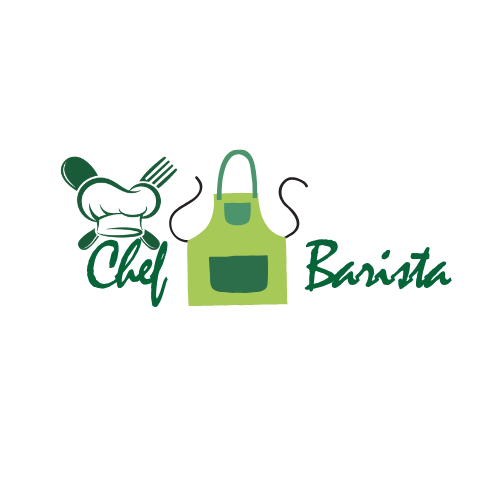“Discover the essentials of coffee with Coffee 101 and Beans & Brew. Whether you’re a curious newcomer or a seasoned enthusiast, this guide is your key to unlocking the magic behind every cup. Ready to go beyond your usual vanilla latte and explore the rich nuances of coffee? From understanding beans to perfecting your brew, we’ve got you covered. Grab your favorite mug, and let’s dive into the flavorful world of coffee!”
Beans & Brew: Your Coffee Journey Starts Here
The world of coffee is vast and exciting, but as a newcomer, it can feel overwhelming. Don’t worry—there’s no need to dive into complicated coffee chemistry right away. Start with the basics and build your confidence step by step. Focus on mastering essential skills like choosing quality beans, grinding them correctly, experimenting with simple brewing methods, and savoring your coffee consciously.
And if your first attempts taste more like bitter rocket fuel than liquid gold, don’t be discouraged! Coffee is all about exploration and discovery. With a little curiosity and experimentation, you’ll soon be crafting smooth, delicious cups that rival your favorite café. Welcome to Beans & Brew—your guide to unlocking the joy of great coffee!
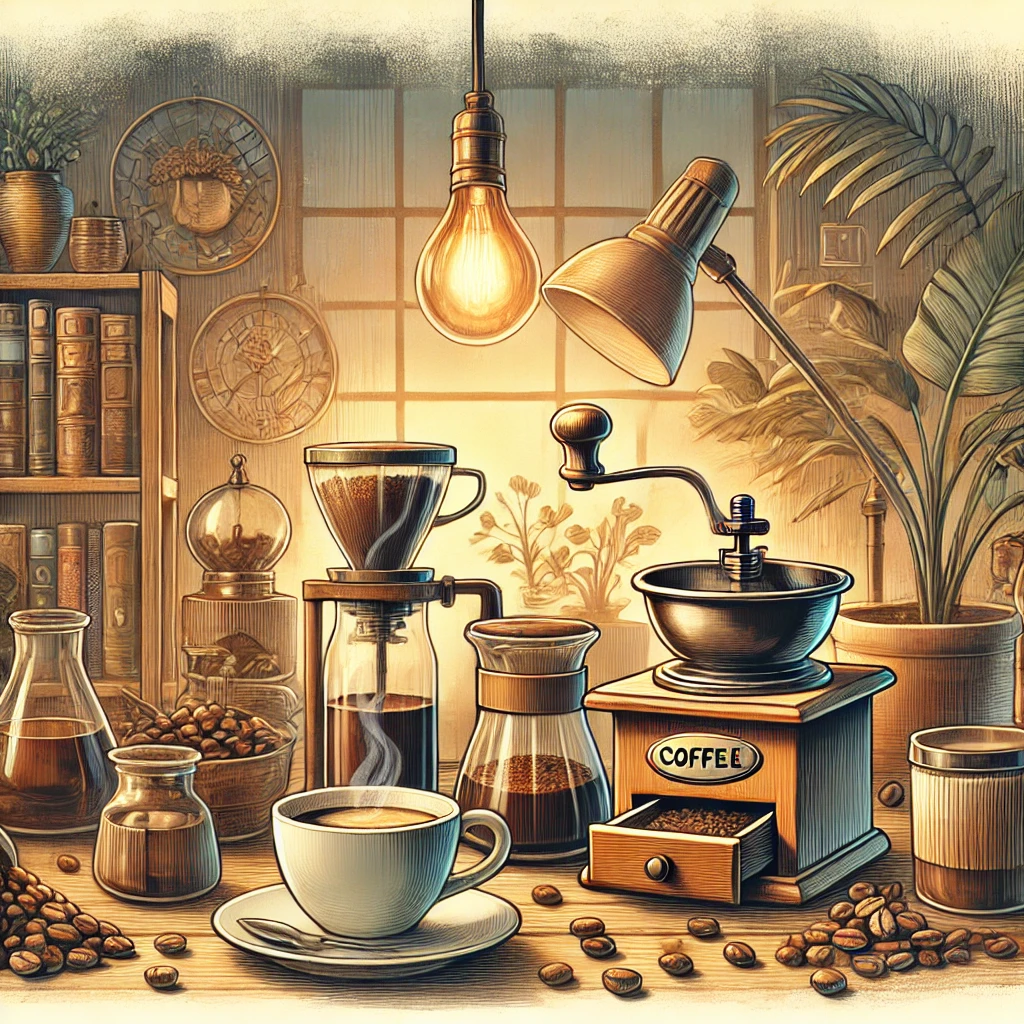
History – Coffee 101
Coffee’s origins trace back to Ethiopian legend in 850 AD, where a goatherd named Kaldi noticed his goats energized after eating coffee berries. Curious, he tried them, felt the buzz, and shared his find with monks who brewed the berries to stay awake during prayers.
From Yemen, coffee spread across the Middle East and North Africa, birthing coffeehouses as cultural hubs. In 1645, Europe’s first coffeehouse opened in Italy, fueling conversation and innovation during the Enlightenment. By the 1700s, coffee reached the Americas, with Brazil emerging as the top producer.
In the 20th century, specialty coffee and cafes like Starbucks brought artisanal brews and espresso drinks to the masses. Today, coffee remains a global staple, a social centerpiece, and a growing art form.
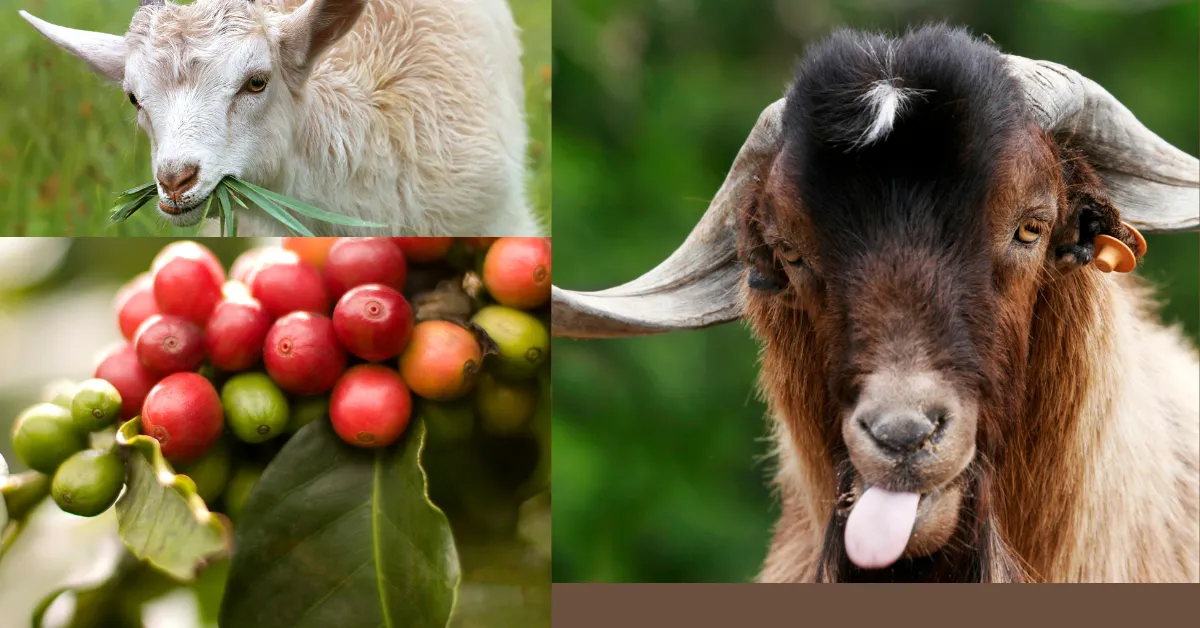
Different Varieties of Coffee Beans
There are two main commercially grown coffee plant species – Coffea Arabica and Coffea Canephore (known as Robusta). Arabica and Robusta have distinctly different flavors and characteristics.
- Arabica
- Makes up 60% of the world’s coffee
- Originated in Ethiopia and grows best at high altitudes
- More complex, nuanced flavor with notes of sugar, fruit, berries
- Softer, smoother body with higher acidity
- Contains less caffeine
- Robusta
- Comprises 40% of the world’s coffee
- Originated in western Africa and grows at lower altitudes
- Stronger, harsher flavor that can be grainy and earthy
- Fuller body with a peanutty aftertaste
- Roughly double the caffeine content as Arabica
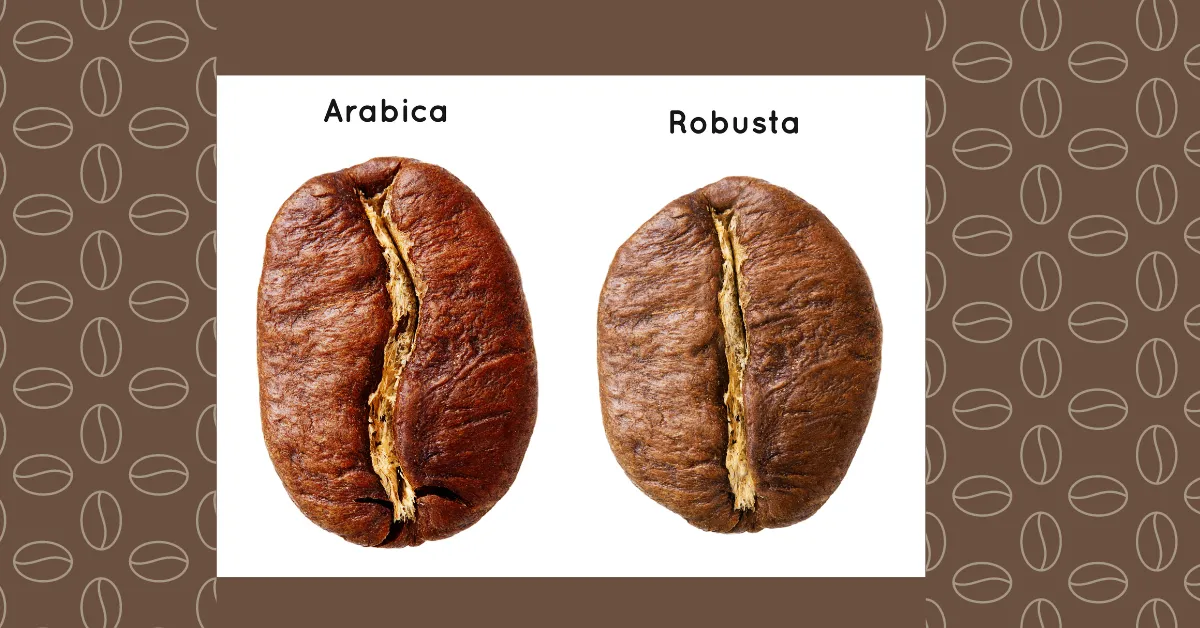
Arabica coffees are higher quality and directly consumed, while Robusta is often used as a filler or instant coffee. Beyond varietal, factors like terroir, elevation, and processing methods all impact beans’ final flavor.
Specialty Coffee
Specialty coffee refers to the top tier of coffee, made from the best Arabica beans grown. To be a specialty, green (unroasted) coffees are graded on criteria like flavor, body, acidity, absence of defects, uniformity, and shelf life. They must receive a score of 80 points or above on a 100-point scale.
Only about 10% of the coffee produced worldwide meets the requirements to be a specialty. These coffees are noted for their complexity, nuanced flavors, and high level of care put into their cultivation and harvesting. Specialty coffees are a step above premium and commercial-grade coffee.
Look for premium coffee derived from the top 10% of Arabica beans. These premium beans have a score of more than 80 out of 100 and command higher pricing due to their complex flavors. Farmers who diligently grow these outstanding beans for a truly sublime cup should be supported.
The Art of Coffee Beans: From Farm to Cup
Ever wondered about the journey of a coffee bean, from the lush plantations to your cup of morning magic? It’s a voyage worth exploring.
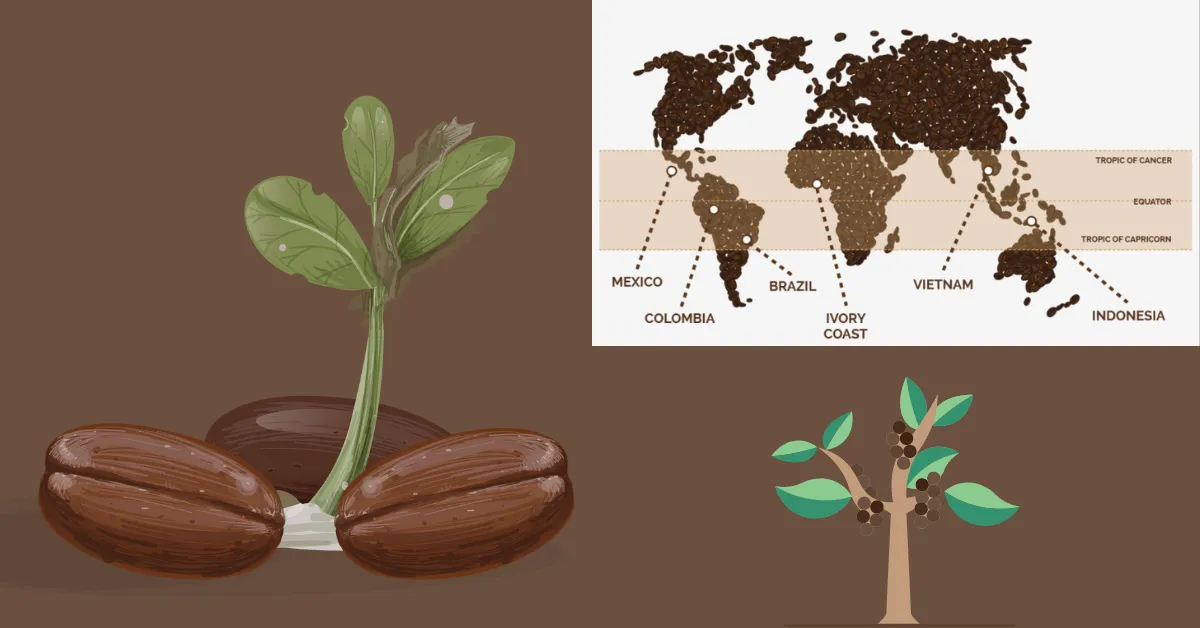
Coffee Growing Regions: Terroir and Diversity
Coffee, like wine grapes, absorbs the character of the place where it is grown. Soil, altitude, and climate all influence flavor, which is referred to as “terroir,” from the heights of Ethiopia to the mountains of Colombia. Every sip has a different flavor!
Investigate single origins to understand regional disparities. Beans from volcanic Indonesia, for example, will taste vastly different from floral, delicious Kenyan beans.
From Plant to Bean: Coffee Processing
Before they leave the farm, the beans are meticulously cared for. The voyage is a labor of love, handpicked, washed, and dried.
After coffee cherries are collected, they can be processed in a variety of ways to separate the beans from the fruit pulp:
- Dry Processing
- Whole cherries are dried in the sun before separating the bean
- Produces a fruitier, heavier body
- Wet Processing
- Fruit skin and pulp are mechanically removed soon after picking, then dried
- Results in cleaner, brighter flavor
- Polished/Washed
- Additional steps to remove fruit residue and outer parchment
- Increases acidity and sweetness
- Honey
- Dried with some fruit pulp still attached to the bean
- Fermentation adds unique honey, berry, floral notes
The chosen process impacts the green bean’s properties and eventual cup quality. Much craft and care go into post-harvest processing.
Roasting Coffee Beans
Roasting is the next vital step that transforms the green coffee beans into the brown roasted beans you purchase. Roasting utilizes heat to initiate chemical reactions in the bean that develop its aromas, flavors, and colors.
Different roasts include:
- Light Roast
- 180-200 ̊C temperature
- Preserves origin character
- Higher acidity, lighter body
- Medium Roast
- 200-220 ̊C temperature
- Balanced, approachable flavor
- Moderate body, some original character
- Dark Roast
- 220-240 ̊C temperature
- Bold, bitter, burnt flavor
- Low acidity, heavy body
The longer the roasting time, the darker the beans become. Light roasts accentuate a coffee’s inherent flavors, while dark roasts exhibit more uniformly roasted notes. Time your beans’ arrival to be within 2 weeks of roasting for ultimate freshness.
Brewing Basics
The heart of the matter: brewing! Choose your weapon of choice – from a humble drip to a majestic espresso machine.
- Choosing Your Coffee Equipment: From Drip to EspressThe best brewing equipment for you is determined by your preferences. Drip machines, French presses, pour-over devices, and espresso machines provide a variety of brewing options. Consider it like selecting your coffee armor. Each approach reveals a distinct flavor.
- Grinding Beans: Freshness and Consistency: Freshness is essential! Freshness is ensured by grinding your beans soon before brewing. Different brewing procedures necessitate different grind sizes to extract the best tastes.
- Brewing Techniques: Diving into Drip, French Press, and More: Experiment with brewing methods to find your favorite. Drip brewing is simple, the French press offers full-bodied richness, and espresso produces concentrated shots.
Brewing Coffee at Home
One beauty of coffee is experimenting with different brewing equipment and techniques. Here are some beginner brew methods to try using basic gear:
- French Press
- Coarse ground coffee steeped in hot water
- Plunger separates grounds after 4 minutes
- Oils pass through a mesh filter for full-bodied coffee
- Pour Over
- Hot water poured over the coffee grounds in the filter
- Flow rate and pouring method impact flavor
- The bright, clean cup that highlights origin characteristics
- Moka Pot
- Stovetop espresso-style brewer
- Water heated up through grounds in the funnel
- Strong, concentrated coffee great for milk drinks
- Cold Brew
- Steep coarsely ground coffee in room temp water overnight
- Low acidity and smoothness
- Can be served over ice or heated
The options are endless for home brewing. Start with quality beans and recommended recipes, then adjust variables like grind size, water temperature, and timing to find your preferences.
Tasting Your Creation
Your creation is now ready for consumption. It’s time to channel your inner coffee connoisseur.
- Understanding Coffee Flavors: Pay close attention when tasting coffee. See if you detect fruity, floral, nutty notes or hints of chocolate and caramel. Single origins showcase coffee’s wildest flavors – juicy berries, brown sugar, and lemon. Even look for fewer desirable traits like bitterness or astringency and make a mental note. Each cup holds a symphony of notes – from fruity to chocolaty. Explore the flavor wheel and discover the nuances.
- Savoring and Describing Coffee: Enjoying coffee engages all your senses. First, appreciate the aromas as they bloom upon pouring. Sip slowly, letting the liquid coat your tongue. Consider the body, acidity, and finish. Finally, savor lingering flavors long after you swallow. Developing your palate takes time, but you’ll gradually notice more subtle characteristics in every sip. Take a sip and let the flavors dance on your palate. Describe what you taste – it’s like poetry for your taste buds.
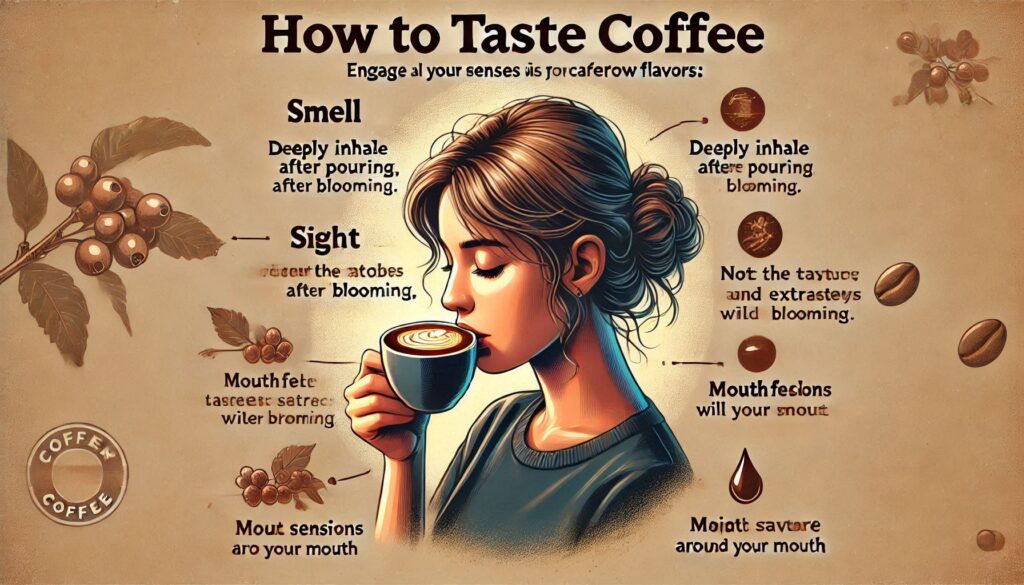
How to Taste Coffee
Drinking high-quality coffee is a multi-sensory experience. Engage all your senses as you carefully taste:
- Smell – Deeply inhale the aromas after pouring, called “blooming.” Notes you detect will foreshadow flavors.
- Sight – Observe the coffee’s color and crema. Indicators of balance and extraction.
- Mouthfeel – Note the weight, texture, and viscosity as you swish it around your mouth.
- Flavors – Main sensations of acidity, sweetness, and bitterness. Also fruity, floral, chocolatey notes.
- Finish – Pleasing lingering aftertaste of a well-extracted coffee.
Describing what you perceive builds your coffee sensory vocabulary. Take notes and compare coffees to grow your palate. Sip mindfully, without distraction to become immersed in every nuance.
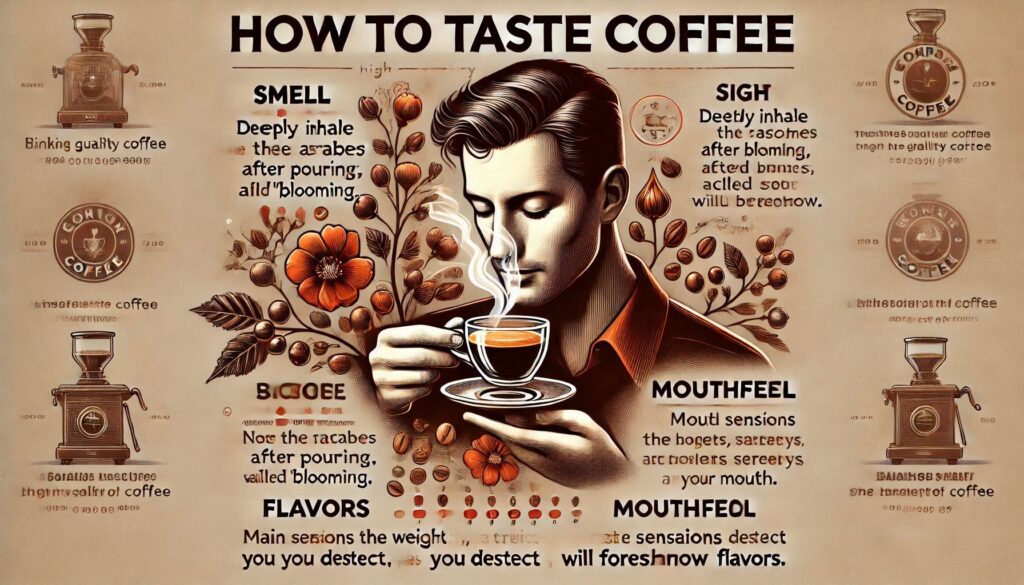
Pairing Coffee with Food
Coffee’s wide range of flavors allows for many pairing possibilities to highlight different characteristics:
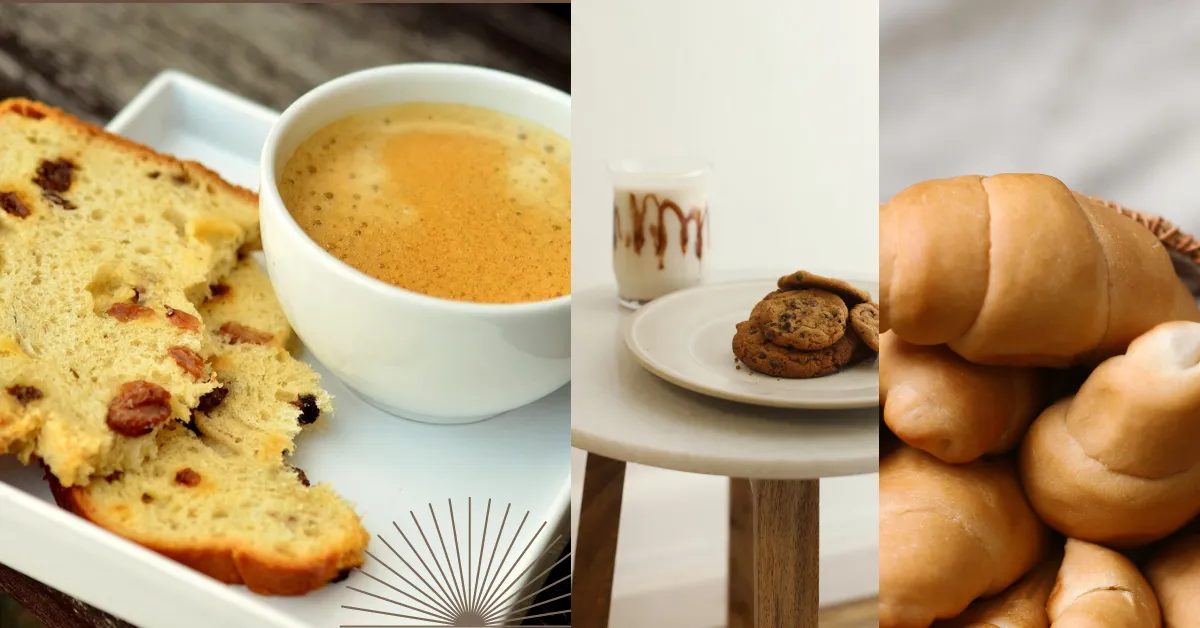
- Light roasts brew with citrus, salads, fish
- Medium roasts brew with nutty cheeses and toast
- Dark roasts brew with chocolate, nuts, caramel
- Cold brew with oatmeal, fruit
Think about contrasting or complementing flavors that either cut or enhance the coffee. Consider foods that share aroma compounds for harmony. Play around with different pairings to keep your mornings interesting.
Navigating the Coffee Community
You’ve passed Coffee 101 with flying colors – but your journey is just beginning! If your interest is piqued, get involved in the vibrant world of coffee culture by:
- Visiting local coffee shops to experience varieties firsthand. Chat with baristas to expand your coffee knowledge.
- Attending public cuppings or roasting facility tours when available.
- Following coffee professionals on YouTube and social media. Let their passion fuel yours!
- Try specialty coffee subscriptions that deliver exciting beans right to your door.
The more you explore and connect with fellow coffee lovers, the deeper your appreciation will grow. Soon you’ll be the coffee connoisseur giving others caffeinated crash courses!
Conclusion
Starting your coffee journey might seem overwhelming, but step by step, it becomes an exciting adventure. Begin with quality beans, a simple brew method, and a curious mindset. Soon, you’ll find yourself savoring flavors, exploring brew techniques, and diving into the rich history of coffee.
Remember, it all began with a curious Ethiopian goat herder named Kaldi, and now it’s your turn to embrace the magic of the bean. From discovering new favorites to mastering the art of brewing, this journey is as rewarding as the perfect cup itself. Here’s to countless amazing brews ahead. Cheers and happy sipping!
